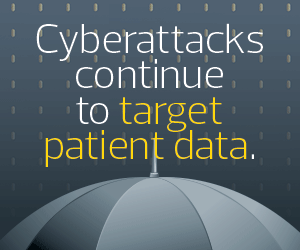AIOps: Intelligent Observability Leads to Better Incident Response
It can be difficult for managers to pinpoint and remediate vulnerabilities across highly distributed healthcare IT networks, but it’s important to do so, as even the smallest vulnerability can lead to a costly cybersecurity incident.
AIOps addresses this challenge by collecting and autonomously analyzing data sets from across hybrid environments in real time. It does this through a set of capabilities referred to as MELT:
- Metrics that indicate what is wrong with the system
- Events that are handled through automatic resolution, as opposed to inundating managers with alerts
- Logs to help answer why the problem is occurring
- Traces to show where the problem is
These capabilities provide IT managers with maximum visibility into security issues and context that they can use to adjust security measures and take preventive steps. With this information in hand, they can take immediate action on high-priority items to ensure that people’s health information and PII are protected.
The Role of AI in AIOps
As its name suggests, AI is a foundational element of AIOps. Indeed, AI and associated technologies such as machine learning and natural language processing bring an extra dimension to the practice of data management and protection by allowing the AIOps system to mitigate current and future vulnerabilities automatically and intelligently.
Embedding AI into the data protection and network monitoring processes creates a more proactive and dynamic way to safeguard patient information. That’s because, in many instances, the system can automatically respond to and mitigate vulnerabilities without the need for human intervention, saving healthcare IT professionals time while successfully protecting data across the distributed network. Machine learning collects and analyzes each incident and response to “learn” how to deal with the next vulnerability, which leads to improved mitigation workflows and faster incident remediation.
READ MORE: AI can help healthcare organizations bolster patient data security.
Pairing AIOps with Observability
AIOps’ potential is truly realized when it’s paired with a process known as observability, a process not unlike network monitoring. But whereas network monitoring focuses on singular aspects of a network, observability provides an unobstructed view of the entire environment.
By applying observability, healthcare IT teams can proactively monitor and assess their multicloud environments without being inundated by alerts. They can prioritize potential issues and respond to them more quickly.
Pairing observability with AIOps results in a more intelligent and effective operation. AIOps runs in the background, continuously observing data movement, interactions between applications and devices, and more. Red flags, including vulnerabilities and bottlenecks, are automatically identified and fixed. Through continuous observation, the AIOps system becomes more intelligent, to the point where it can predict network slowdowns and issues that could result in a security breach, such as compromised patient data.
AIOps is not just an ideal option for state and local health organizations. Federal agencies — such as the Department of Health and Human Services, which collects and houses data on millions of Americans and more than 2,000 diseases and health conditions — can also benefit.
In short, just about any healthcare organization, at any level, can use AIOps to meet HIPAA requirements with minimal human effort. Indeed, it may very well be the most effective and comprehensive method available for protecting patient data.











